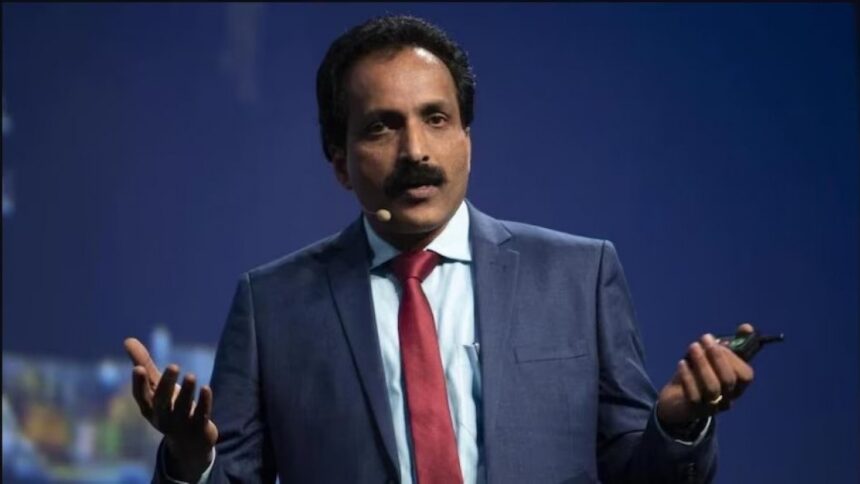After the successful launch of Chandrayaan-3, ISRO Chairman S Somanath said that he considers rockets like babies. He said that he feels a sense of responsibility and attachment to rockets, just like a parent would feel towards their child.
Somanath said that he was “very happy and satisfied” with the successful launch of Chandrayaan-3. He said that the launch was a “major milestone” in India’s space program and that it would help to further our understanding of the moon.
“As an engineer and scientist, I have a love for rockets. I consider the rocket like a baby, seeing its birth, its growth, its problems of growth, its emotions, and developing a deep understanding of its mechanics and dynamics and its life as such,” Somanath said while delivering his address at the 12th Convocation of IIT Hyderabad in neighbouring Sangareddy district.
Somanath also said that he was proud of the ISRO team for their hard work and dedication. He said that the team had worked tirelessly to make the launch a success.
He also added that ISRO converts thousands of measurements into curves and study models to understand how they perform. This is a process called data analytics, and it is used to make sense of large amounts of data.
“For example, on the last Chandrayaan rocket, we had almost 2,000 measurements, and finally they came to us as graphs and curves. Like a doctor looking at the ECG, we look at these graphs. We have created an attachment to those curves and graphs, and we can understand by looking at the ups and downs what exactly is its speed…how it is going. This is something very interesting to understand a machine and make sense of it,” he said.
Somanath said that one of the difficulties with using robots for space exploration is that they lack sensory perception and emotions. Robots cannot experience the world in the same way that humans do, and they cannot make decisions based on emotions.
Somanath said that this is a major limitation for robots, as it means that they cannot fully understand the risks and challenges of space exploration. He said that humans, on the other hand, can use their senses and emotions to make better decisions in difficult situations.
“I believe this gap is going to be closed soon,” he added. Somnath said that if there is a way to merge external electronic sensors with the human nervous system, then mankind will be one step closer to the integration of machines with life. This is a concept known as cyborgs, and it is the idea of merging humans and machines into a single entity.
“Can we actuate systems with the electrical signal generated by thought and thus external mechanical and electrical devices? Then, you can actually control a robot or a machine with your thought processes,” he said.
“Further growth in this domain will enable all the sensors of a robot to be integrated with a human in some form to perceive what the robot feels and thus achieve remote perception capability. So, you are actually creating a replica of yourself. In such an eventuality, it is not necessary for humans to travel anywhere. So, you can sit inside your room and experience the world, including outer space and all other planets.
“I believe, the human form will one day evolve into an integrated system of electrical sensors and devices with the brain of human beings. So, no more human physical bodies will be necessary,” he felt.
Somanath said that ISRO needs medical doctors to study the metabolism and human physique to survive the extreme conditions of space flight. These conditions include: high acceleration and vibration sensitivity, weightlessness, and prolonged exposure to mild radiation
“We are currently developing and designing a test setup to evaluate them”. The growth in material science, microelectronics, quantum technologies, data sciences, AI and ML, and biotechnology will make the life of a human being much better than that we experience today, he added.
Somanath said that harnessing the power of technology is the solution to solving the challenging problems of poverty, malnutrition, security of the nation, education and jobs for all, etc. He said that technology can be used to improve the lives of people in a number of ways.
“So, we believe that you people (IIT graduates) are those torchbearers of the future, especially those who are going to create future technologies and future innovations. You are holding the key. Not you alone; those generations of people who are graduating, coming out of those premier institutions have that power to change the destiny of this nation,” the ISRO chief added.
The fourth lunar exploration mission of the Indian Space Research Organization (ISRO), Chandrayaan-3, was successfully launched on July 14, 2023. The mission aims to soft-land a lander and rover on the lunar south pole, which has never been explored before.
The soft landing is scheduled for August 23, 2023. If successful, Chandrayaan-3 will be a major achievement for ISRO and will help us to better understand the lunar south pole.
The lunar south pole is a region of the moon that is of particular interest to scientists because it is thought to be rich in water ice. Water ice is a valuable resource that could be used to support future human exploration of the moon.
Also Read: Gautam Adani meets Bangladesh PM, commissions India’s first transnational power project








